Media | Articles
Track Tested: Ford Shelby GT500 vs. Porsche 718 Cayman GT4
Consider this metaphor I just made up: If a Porsche is a paring knife, small but potent, a fast Mustang is a fork. Still sharp, just larger and more blunt. Both help food reach your mouth, but one has no interest in artsy shaping. It just wants to stab hunks of meat.
Now meet two of the greatest performance utensils we’ve seen. The 2021 Ford Shelby Mustang GT500 weighs more than 4100 pounds and makes 760 hp and 625 lb-ft from a supercharged, 7500-rpm, front-mounted, 5.2-liter V-8. The 2021 Porsche 718 Cayman GT4 4.0 weighs more than 3200 pounds. It makes 414 hp and 317 lb-ft from a naturally aspirated, mid-mounted, 8000-rpm, 4.0-liter flat-six.
A $74,000 Ford and a $100,000 Porsche. Ford named the GT500’s V-8 “Predator.” The 12-psi Eaton blower in that Mustang displaces nearly three-quarters as much air as the Porsche’s entire engine. You can order the Ford with the Carbon Track Pack ($18,500), as we tested: aero bits and anti-lift fillips, 20-inch carbon-fiber wheels (the front barrels are plasma-coated for resistance to brake heat), manually adjustable suspension paired with the standard electronically adjustable shocks, track-ready Michelin Pilot Sport Cup 2s.

The GT4 comes stock with Cup 2s. It’s also rear-drive and adjustable for setup. Other similarities are thin on the ground. The Porsche’s engine is essentially the twin-turbo 3.0-liter from the latest 911, bored and stroked, minus the turbos. Its heads, manifolds, rods, and pistons are new. The front axle is ported over virtually unchanged from the previous version of the more expensive 911 GT3. Where the Ford offers only a fiendishly effective seven-speed twin-clutch, the GT4 can be had with either a superb six-speed manual, or, new for 2021, an excellent seven-speed twin-clutch.
In one corner, the most powerful engine ever bolted into a mass-produced Ford. In the other, an expensive Stuttgart flyweight. Remarkably, these machine turn and stop with each other. Which do you need? More important—since road cars aimed at track duty are a luxury—which do you want?
Marketplace
Buy and sell classics with confidence

Last month, four staffers from this website met in southwest Kentucky. Executive Editor Eric Weiner and Editor Kyle Smith joined me for a day of bombing over back roads in a GT4 and a GT500. Then we headed for the tricky two-mile West Circuit at Bowling Green’s NCM Motorsports Park, to drive the cars with our digital director and Plymouth Neon racer, Jack Baruth.
The result was a study in contrast. It was also a mix of surprises.
2021 Porsche 718 Cayman GT4
It’s an honest little thing. Weiner called it “a surgical romance.” It wants you to be educated, and it hates brute inputs. The chassis does not bark demands. It begs to be driven with fingertips.

You can’t talk about the GT4 without mentioning its more powerful sibling and obvious inspiration, the 911 GT3. Porsche’s most trackable 911 is around $62,000 more than a GT4. It is also lighter and more obsessed with tradition. Like all 911s, it wears the blessing-curse of being a rear-engine touchpoint and a brand poster child. Much of its mass is bundled up near the rear wheels, and that bias complicates everything from packaging to suspension tuning.
People like the 911, and the GT3 is a hellacious good. But.
What we have here is a six-cylinder, track-rat version of Porsche’s entry-level, four-cylinder sports honker, the 718 Cayman. Lower and stiffer and faster. The GT4’s engine lives in its middle, to help the car pivot. There is a dose of theater—a water-cooled flat-six specifically designed to grumble and snort like an older and air-cooled Porsche, for example. Mostly, however, the GT4 is the GT3 idea, slower in a straight line, with a chassis that requires less special treatment from the driver and less engineering wizardry. (Some older GT3s wear active engine mounts, to offset handling changes from drivetrain inertia! The GT4 just puts its engine in a place where drivetrain wiggles do… less.)
The GT4 was born in 2015 with a 3.8-liter flat-six. The 4.0 that arrived for 2020 is less cammy and stronger in the midrange. It drones away more and isn’t quite as sweet or as musical, but the car is faster off a corner and less work to keep lit and pulling.
As in the GT3, you make compromises: Phone calls are drowned out by intake noise and tire slap. The standard stereo sounds tinny and hollow. (To be fair, a 505-watt, 10-speaker Bose system is optional.) As in the GT500, those Cup 2s are happiest in dry max attack and go to glass with public-road load in cold weather. Also like the GT500, there’s so much mechanical grip and damper compliance that tight back roads are mostly point-and-shoot. In those circumstances, fluidity is welcome but not required, especially with stability control engaged.
Unlike the GT500: Long miles fatigue your joints and ears. The Porsche wants you awake. The steering is weighty on the highway and feels genuinely talkative in corners, not just loaded.
Porsche makes many versions of its PDK automatic. This one is grabbier and more abrupt than most. Maybe it’s race-car cosplay, like the engine’s clatter? The same gearbox tech in Stuttgart’s luxury sedans feels velvety at low speed but sacrifices nothing at max crack. Griping about any of this means you are probably a bored lawyer in West L.A. traffic who should have just bought a base 911 on all-seasons. Either that car or a slower 718 model will be more involving on a back road, because it will move and squirm and dive, its limits lower.
Every so often, though, you glimpse the talent. The car catches air and lands with shock and tire ready for power now. Tight uphill corners break the rear loose briefly, before a quick but gentle ramp into grip that seems almost supernaturally friendly.
The GT4 has that happy mix of feedback and transparency that paints even the smallest moves by the driver as the choices of a talent. Somebody who belongs in that seat, better than the rest of us. Even if you’re not.
Especially if you’re not.
This is part of why people buy Porsches, you know.

Track behavior is predictable: Precise and tidy, unless you ask for something else. Bring the tires to temp, the nose cranks fluidly into a corner. Ham hands can induce a smidge of entry push, but a smooth roll out of trailed brake bends the car in neutral. Make that roll too quick, or give the GT4 too much entry aggression, you will flick into an eyeblink slide. It’s slow on the stopwatch but addictive in fast sweepers.
“You know what makes me love this car?” Weiner said. “When I’m done driving, I love driving more. Not the car.”
The engine is enough but also never enough. One of our testers noted how the GT4 has so much grip when driven properly, it just “gets tractored around” by that linear six. A certain type of person will meet this tractoring and purposely overdrive a smidge, for fun. Get the tires too hot, the Porsche comes alive, feels more difficult and on-boil. Corner entry becomes a game of skitter, walking up to the edge of the front rubber and working to keep the rear stuck but unstuck on entry.
Maybe I’m broken, but I adore that stuff. You get real proud of yourself, maybe not always for good reason, but hey, grins are grins.

Baruth allowed as how the Porsche was a dynamic gem but lightly cold, lacking “combat-ready thrill.” A very good motor in a Herculean chassis, he said, where the Ford is a Herculean motor in a very good chassis.
“Yeah,” I said. “Oddly, I think I’d rather have the older car, with a 3.8, even less power for more personality. But I do like it.”
Things we would add: Another 50 horses, to better work that glorious suspension. That twin-clutch is robotically excellent at speed, but it wraps the car in a blanket of sterility; the standard manual makes the engine seem less clinical and staid.
“It’s hard to imagine not passing the whole world with this during a track day,” Baruth said. “Huge grip, super predictable. Compared to a 986 or 987”—the first two generations of Boxster and Boxster/Cayman—“it’s way more stable under braking and exit. It never feels like you’re going to make a big mistake on throttle. Unlike a 911, it seems honest, from an engineering standpoint.”
“No cramming a tech solve into a compromised layout, for better or worse,” I said.
“It’s like the jet trainer of sports cars,” he said.
So we chased it with a cruise missile.
2021 Ford Mustang Shelby GT500
This is not a good Mustang. It’s a great Mustang. It is god-mother-bird-flipper lord of all stock Mustangs. Its face makes small children cry. Your Uncle Jimbo probably has a Fox-body he built in ’92 that can outrun this thumper in the quarter, and that is cool, but it is also irrelevant. That car is not the modern engineering division of Ford Motor tripped out on a zombie dream from the Sixties, not a 760-hp, 4100-pound, warranty-carrying taxicab with buckets of factory road-course talent. Uncle Jimbo’s Fox does not want to eat brains in a corner.
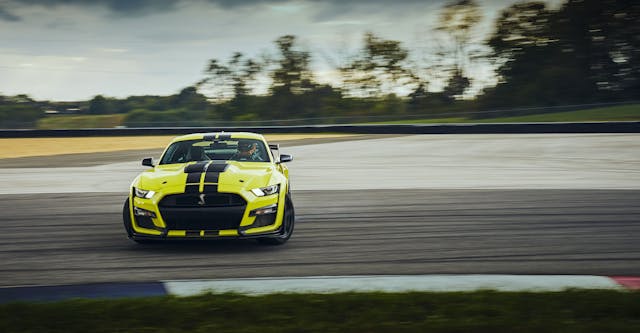
Like the last GT500, the ’21 is great at ordinary driving. No nasty ride or loud interior to deter you from schlepping the kids to school or trekking across a time zone. What the car doesn’t do: The corner-entry-patience game of every previous GT500, even the ones that turned and stopped. Feel like an all-motor special. Play shrinking violet.
Other drivers rubberneck. There are acres of visual texture, not just stripes but shouty body tweaks for aerodynamics and cooling. What first strikes as kitsch tends to grow on you. (The Eric Weiner label: “It’s a mechanical bull.”) Ford says the wing and splitter are necessary; the former neatly bisects the rearview mirror, blocking the view of traffic.
The interior is current Mustang plus frippery and comfy wide-butt Recaros, a smidge bunkerlike but roomy. Visibility is decent save where that tumescent hood bulge invades the windshield. The 12-inch digital dash can seem a little tacky and cluttered, especially next to the Cayman’s simple gauges.
This is a big car, and it punches audible holes in the air. If the Porsche sounds like a warmed-over 911 under a hat of light wail, the Ford is a louder, nastier tenor. The exhaust is a wave of whip-cracks and barks. Shifts are flung through with gravitas and boom, as if the car were putting something away permanently—IT IS DONE, WE SHALL NEVER TOUCH THIRD GEAR AGAIN. (Your narrator hears those words in the voice of Yul Brynner from The Ten Commandments, but then, your narrator is a dork.) A person who wanted to make Porsche people yap on the internet would label this gearbox 95 percent of the one in the GT4. It seems wanting only in road use, in full automatic mode. Certain conditions make it seem slightly sloppy and less of a mind-reader.
Not that you need to shift on the road. The engine’s torque is seamless, naturally aspirated in character, and those pistons seem to dawdle even when hustling. Halfway through our six-hour road-test leg, barreling across Kentucky, young Kyle Smith noted that the Shelby “loafs wonderfully.” I was riding passenger with him at the time; I would tell you our speed, but I was too busy watching trees melt to look at the gauges.

In the paddock, you think, What a Fat Boy. The car idles into pit lane with a sense of heft absent from the Cayman. There’s more stiff-damper bobble at low speed, and the steering feels nice under real load but never spectacular. The Porsche needs delicate inputs at the limit, and it makes those facts crystal clear from the first corner. The Shelby initially comes across as lazy, all power and tire and that goofy hood.
A lap or two in, the car shows you its wants. Entry speed, for one thing. Always and a surprising amount, with the steering cracked into a quick lean on the outside front. Fast corner entry means a fast settle, a damped pointing that would be nice for a 3500-pound car but is frankly shocking for a comfy one wearing another 600 pounds, mega spring rate or not. The Ford’s brake pedal is also higher and more firm than the Porsche’s. It offers a more aggressive initial bite and more consistency with heat. Those carbon wheels have an odd feel over curbs, both eerily reactive and a little… well, the only word is… sproingy?

Remarkably, you think mostly about the chassis. That 5.2 never feels as special as at the end of a long straight. Everywhere else, it simply disappears under a wall of sound. Fast corners give a light blanket of understeer, slow corners a smidge more, but a whisper of greed from your right toes often fixes the problem. Either way, the car comes across as remarkably calm, even in full apex-leave bazooka, to the point where I become convinced halfway through the day that the Porsche was gapping the Ford in corners. Then I looked at our data box for the Shelby’s entry speeds and raised my eyebrows so high, they hit the back of my shirt.
So much is surprising here. A sharp and quick grip-up on exit. Mass that seems a real drawback only in quick transitions, or as the nose comes off trailed brake. Stability control is generally more graceful and subtle with chassis adjustments than in the Porsche, unless you’re being an idiot with the driveline, in which case the Ford’s software is more aggro. As in the GT4, turning the system off doesn’t make the car harder to drive, it just forces you to think about tire heat. Breakaway at high speed is slightly more progressive, hands slower in catching a slide, but the Ford eats up more space in the process.

How is a Mustang this wieldy and potent? Imagine if somebody made the long guns of the USS Iowa pivot like a water pistol.
Baruth summed it up nicely after his final lap: “There’s just remarkable fidelity, for a pony car, to your requests. It really does turn in, it really does balance on the throttle. That big arrowhead of a motor really lets it behave on the brakes.”
Sitting on the wall, listening to the brakes tick, I agreed. “At no point does the car demand a fight. You commit more to corners and go faster and think more but don’t sweat more. If you don’t like this, you take yourself too seriously.”
He nodded. “It’s like the Camaro ZL1 1LE: a perfected, track-focused pony car, with the bad habits deliberately exorcised via the application of massive tech and effort.”
You could gripe here about the weight, or the Shelby’s undeniable thirst for fuel and tire. Chew more on the lack of an optional clutch pedal; Ford’s seven-speed is good enough to simply lurk in the background, and like many modern automatics, it pulls off neat little torque-smoothed shifts under lateral load, where a human might be less delicate. Unlike in the Cayman, however, two pedals seem less in character here. Pony cars have traditionally been rooted in theater, but this form factor is rarely more vibrant when the machine does work for you, faster or not.

Do you have the desire to step up to a megaton chassis dance every single lap, at often absurd entry speed? Do you find it hilarious to own a Detroit thunderbus that runs down pedigreed fancies while sharing countless part numbers with rental cars? What if you don’t care about That Porsche Sound or the GT4’s remarkably stout resale, and you just want to romp around tracks like a broad-shouldered Great American on a late-brakes-and-fried-cheese bender?
If you answered yes to any of that: Meet your huckleberry.
***
Automotive comparison tests are structured to find the most appropriate tool for multiple jobs. The catch is, we rarely buy track cars on clinical merit; those purchases hang on gut feeling. Track days are also not racing, which means intangible appeal often trumps lap times.
Your author could make a strong argument for a GT4 with three pedals and overheated tires. Who doesn’t want to play mid-engine finesse-on-casters until they put you in the ground? But for most track-day folk, the GT500 will just be more for less—more speed and comfort for less money, more satisfying challenge of weight management, more point-bys received and not given.
There’s also the consideration of how GT4s and Mustangs actually appear in the wild. Many people who track these cars leave the dealer and head straight for the aftermarket. They up spring and damper rates and bolt on a more aggressive tire, trading road comfort for speed.

Apply that recipe to the Porsche, you will produce one of the world’s great 400-horse momentum cars and a vibe like an IMSA test. You will also lose the finely judged factory delicacy, that mercury-skillet feeling on hot tires. Aim the same tricks at a GT500, you’ll get a faster Mustang, fewer drawbacks. (Credit the current moment in tire tech: In 2021, a front-engine road car of this power and weight will generally always want for grip. The Porsche is just a different bird.)
Where the Cayman feels more classically refined, the Mustang is more of a compromise by nature. It welcomes the novice but demands patience and guts for advanced work. In our little battle at NCM, the GT4 obviously did more with less. The fat fork from Flat Rock wasn’t always the sharpest, and it was never the easiest or the most flattering to drive. But—wonder of wonders—with a sensible right foot and a healthy sense of humor, it was also, lap after lap, far and away the most brain-eating fun.

2021 Porsche 718 Cayman GT4
Base price/as-tested: $101,550 / $109,440*
Highs: Exceptional chassis in an exceptional state of tune. Limit behavior makes you look like a genius, and around-town behavior makes you look like someone who really likes the Nürburgring. (Understandable.)
Lows: Noise, vibration, and harshness are part of the draw, but some will still hate it. Engine can be droney, sounds better inside than out. Seems like a bargain next to its larger 911 GT3 sibling—or even a base 911—but not compared to anything else, and like all Porsches, options send the window sticker stratospheric.
Summary: An expensive joy. Get the manual.
*includes 7-speed PDK automatic ($3210), heated seats ($530), automatic climate ($770), CarPlay ($360), autodim mirror with rain sensor ($700), navigation ($2320)

2021 Ford Mustang Shelby GT500
Base price/as-tested: $74,095* / $96,970**
Highs: All of the power, right now, and it knows how to use it. Beats the Porsche silly on comfort and quiet either around town or over the road. Monster brakes and entry grip.
Lows: Like the GT4, needs substantial pace to feel alive on a back road, but feels more unwieldy on a tight two-lane. Substantial weight and power mean tire management is a real thing, real soon, for your track weekend. EPA mileage of 12/18, and a tank that drains quick.
Summary: A bargain joy, and our house pick, unless you simply have to have a Porsche. (Understandable.) Get it painted like a school bus.
*includes $2600 gas-guzzler tax
**includes Carbon Fiber Track Pack ($18,500), optional striping ($1375), Technology Package ($3000)
To facilitate this story, the manufacturers provided vehicle access, basic safety prep, and one tank of fuel. Ford provided two sets of tires, mounted and balanced.


























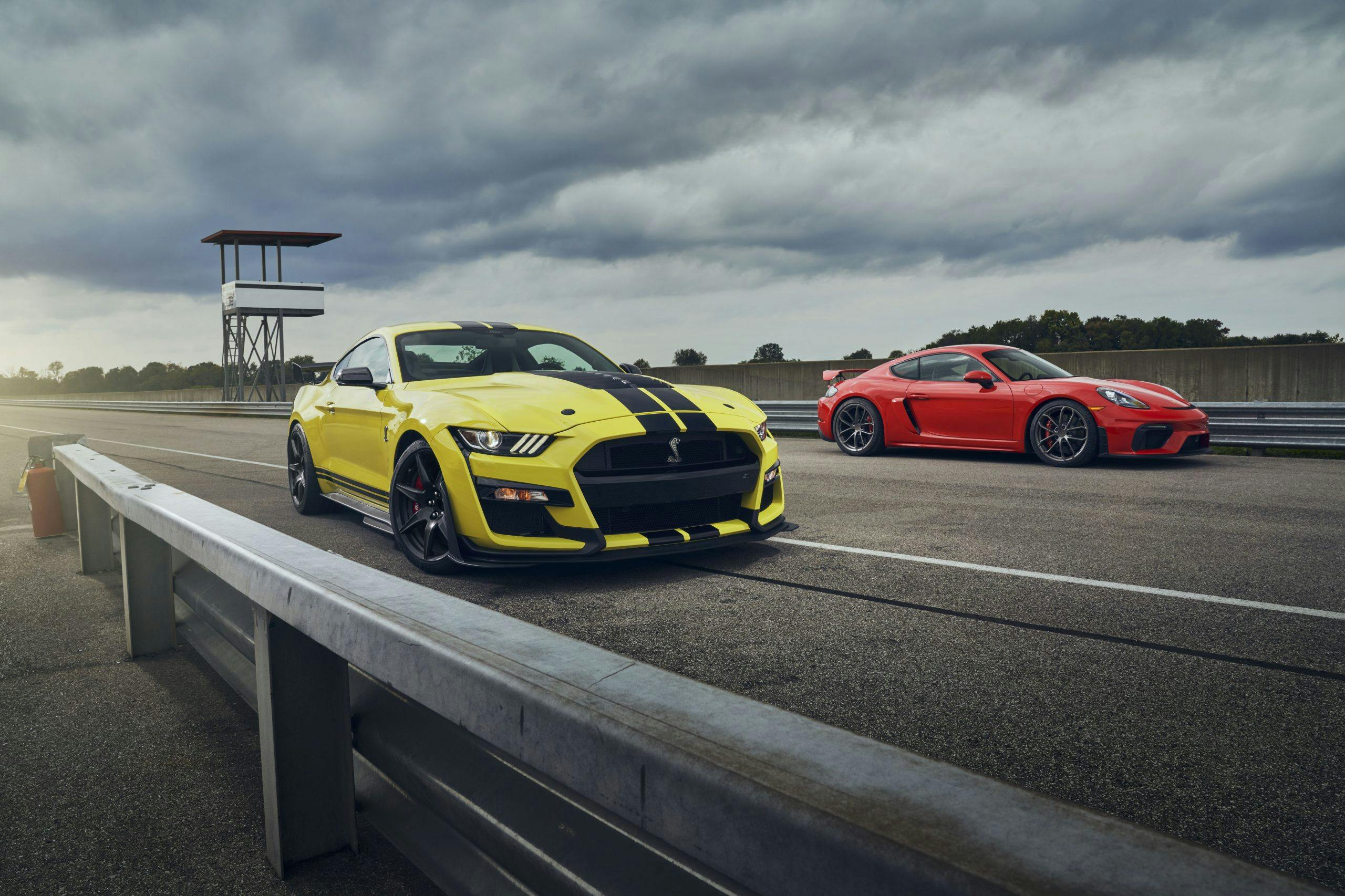

























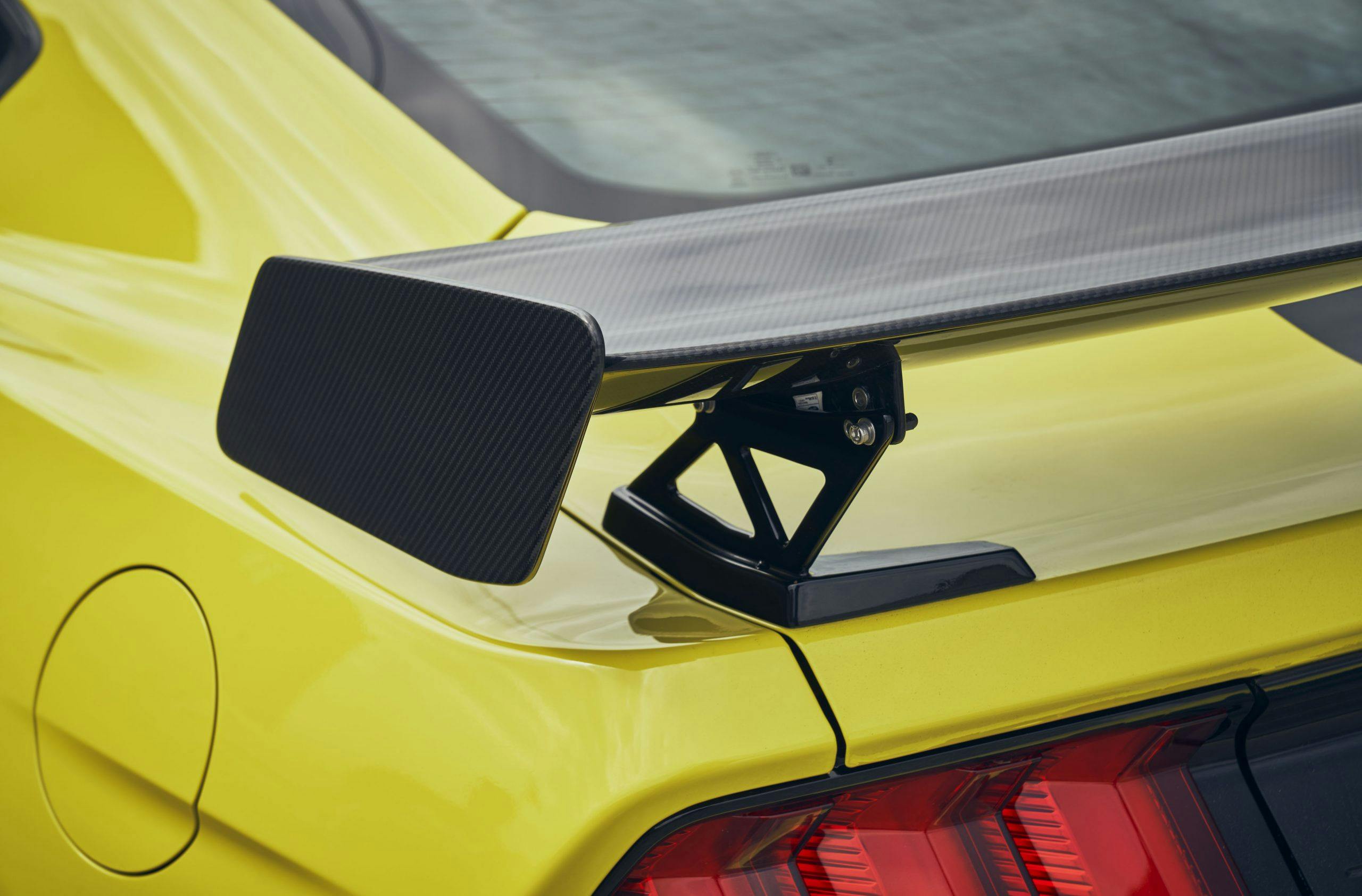




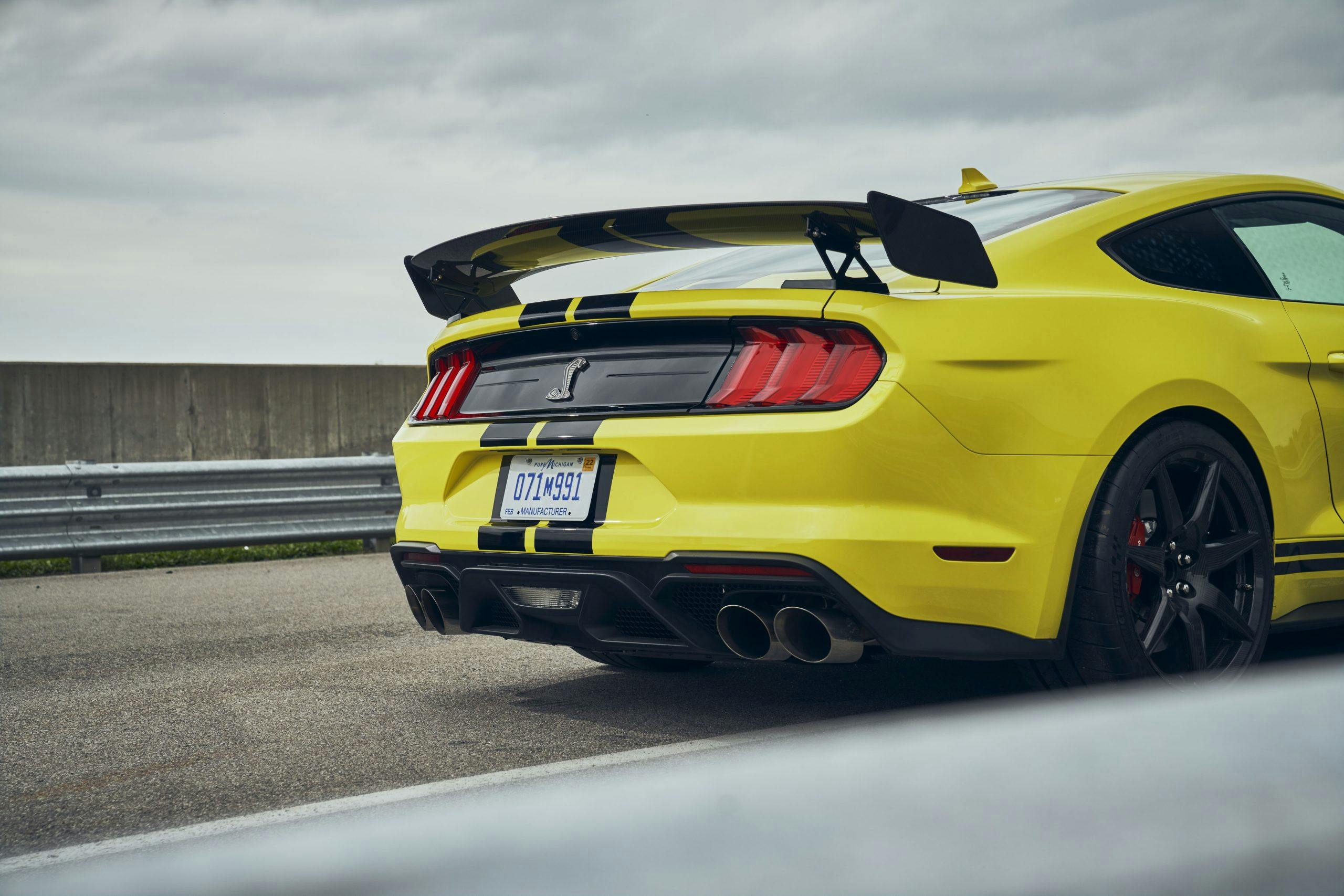
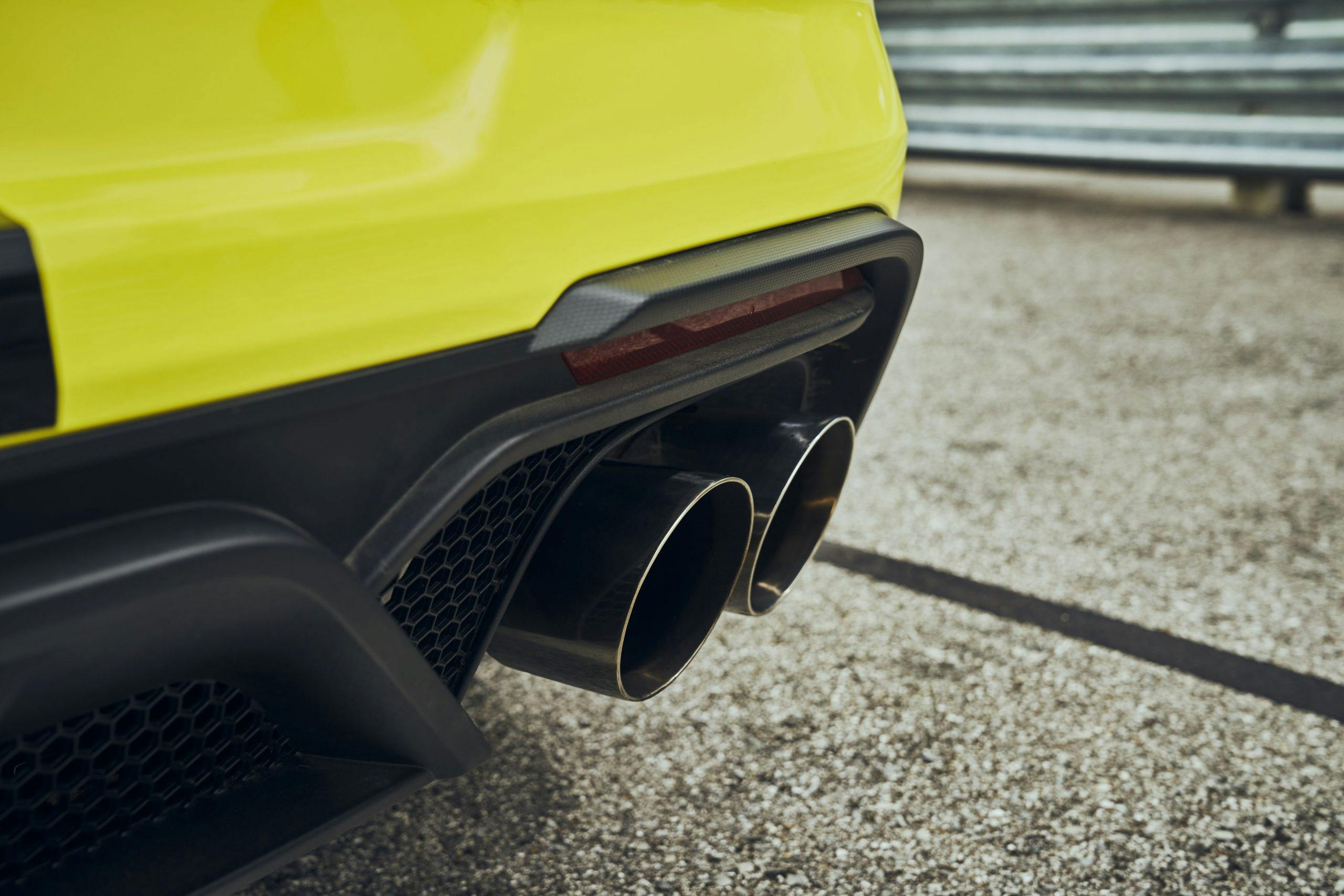


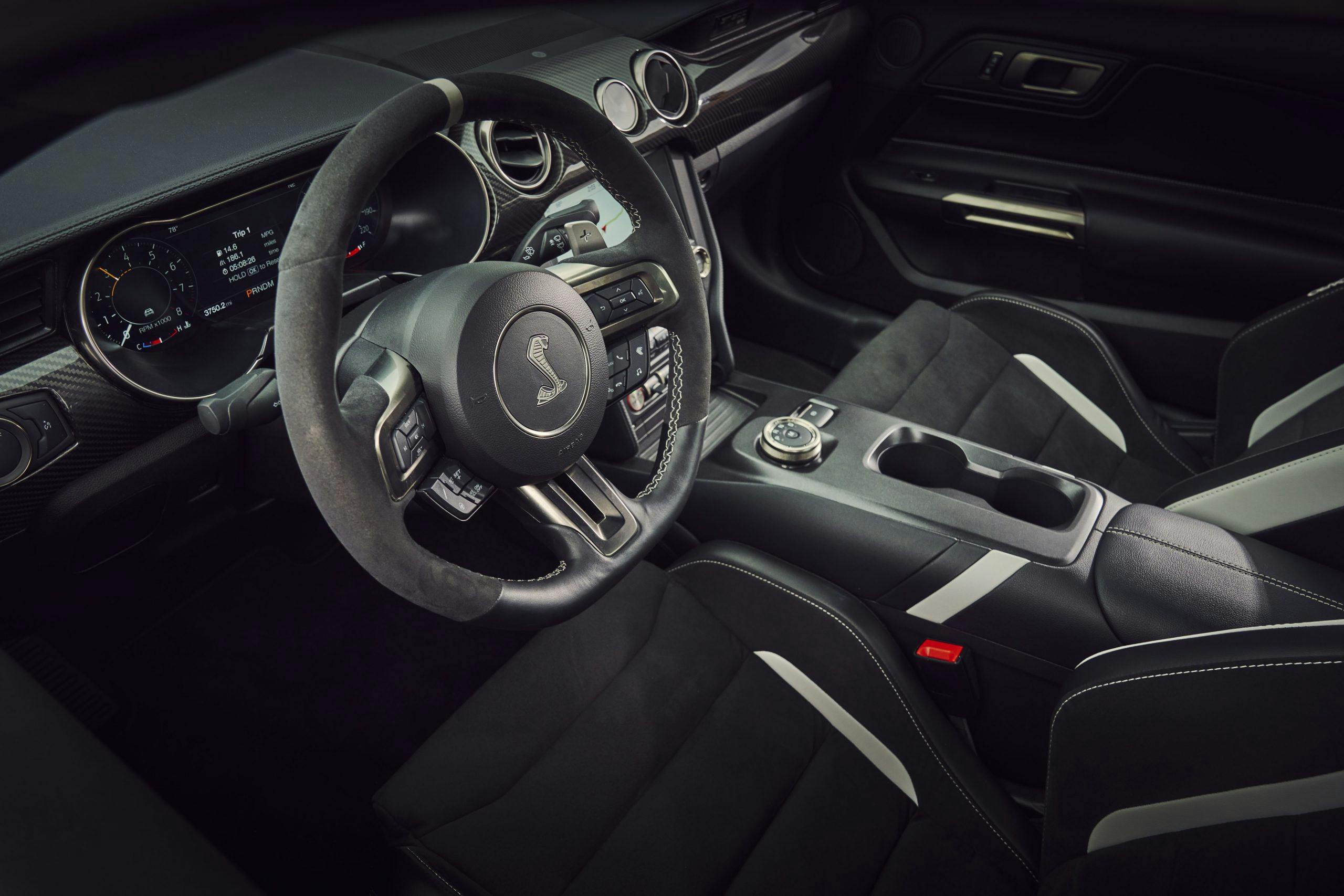






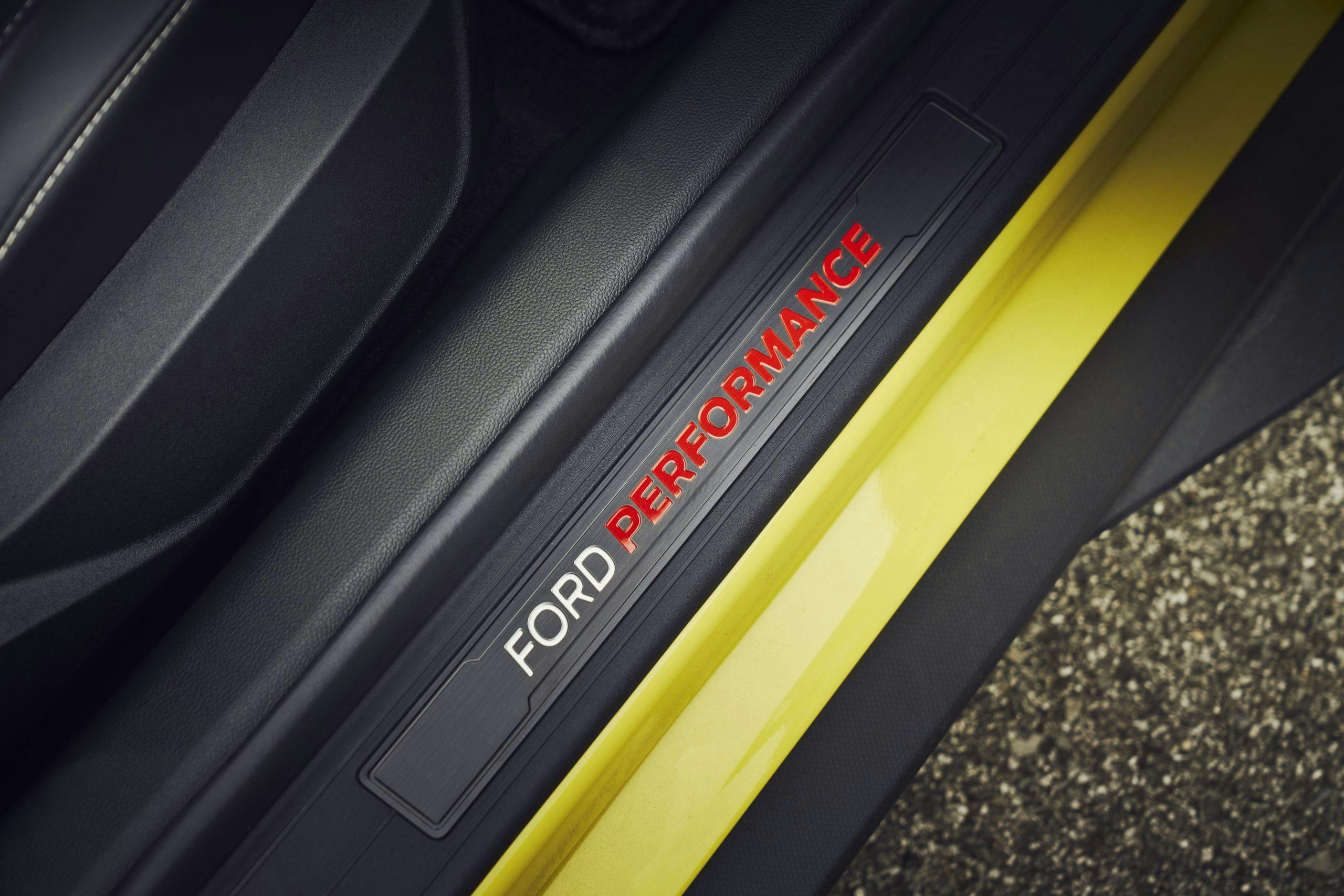







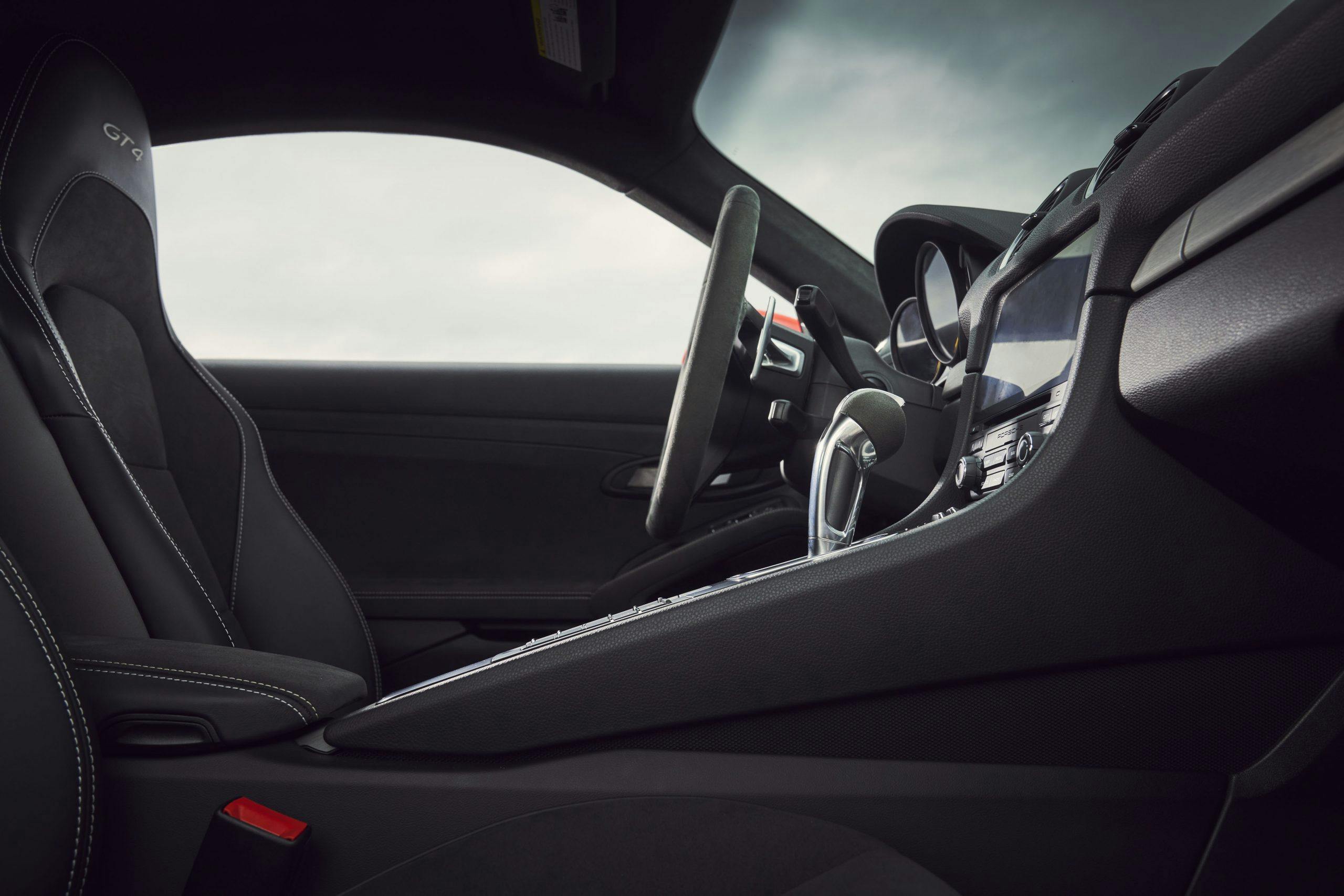





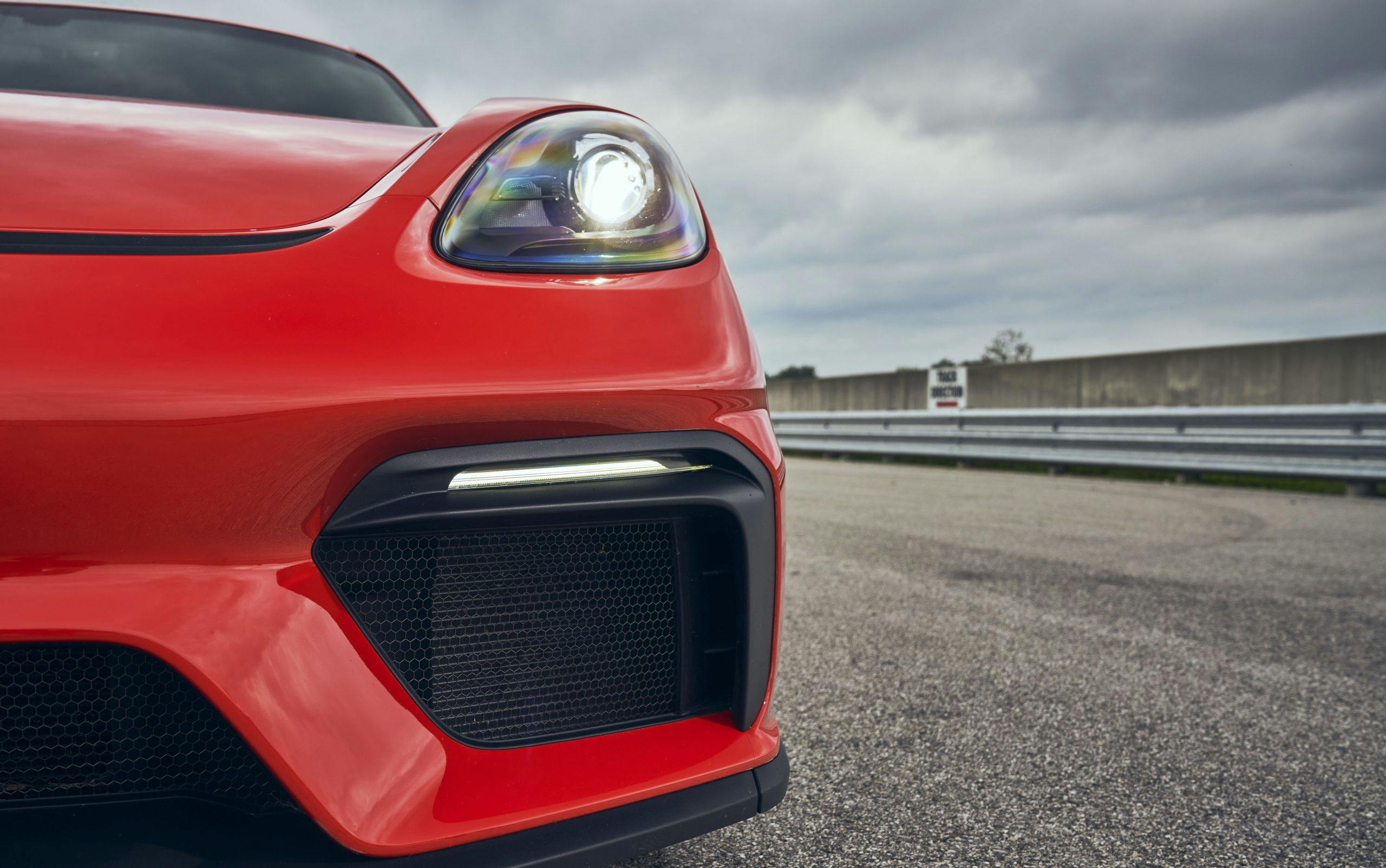












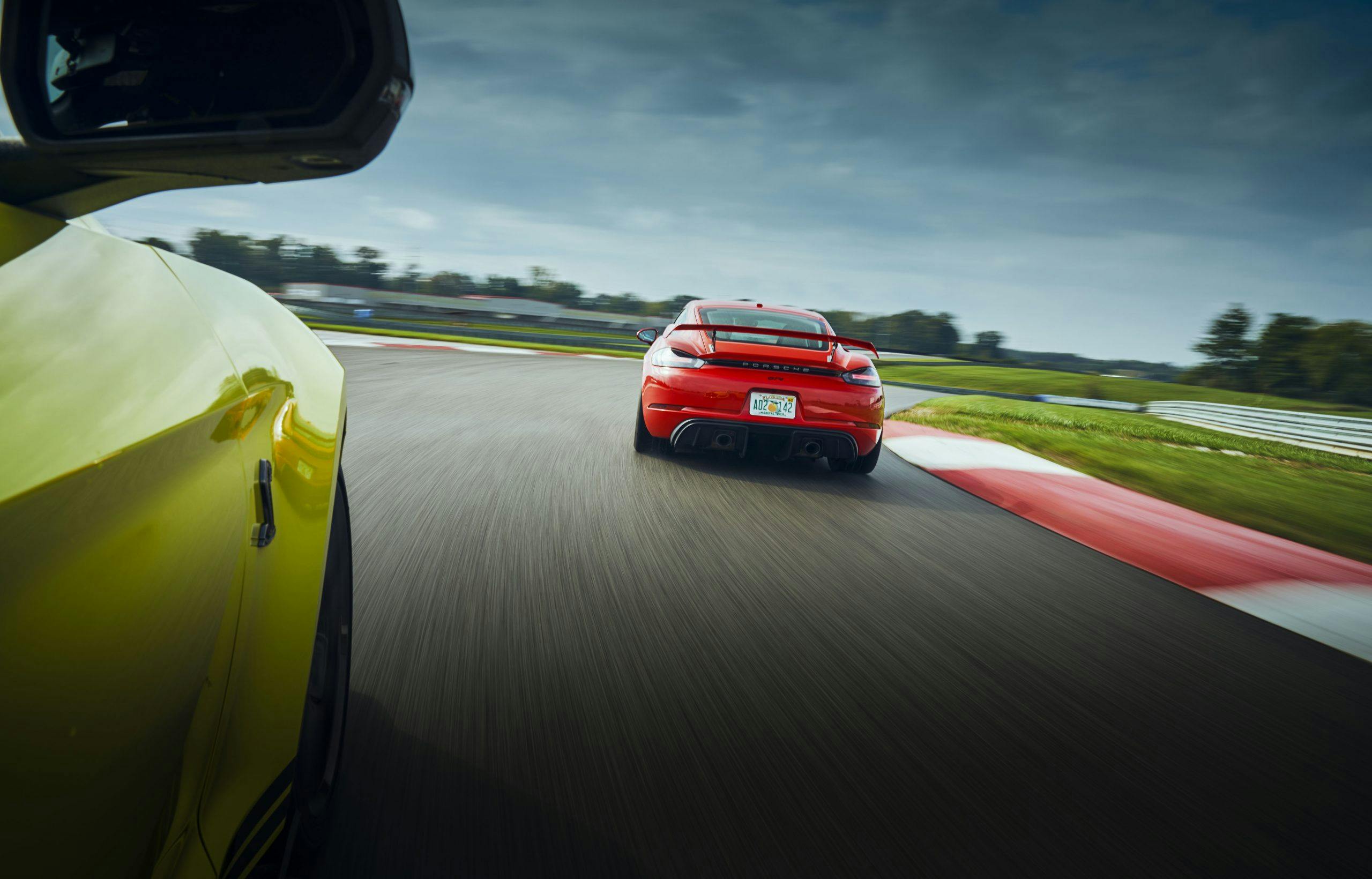








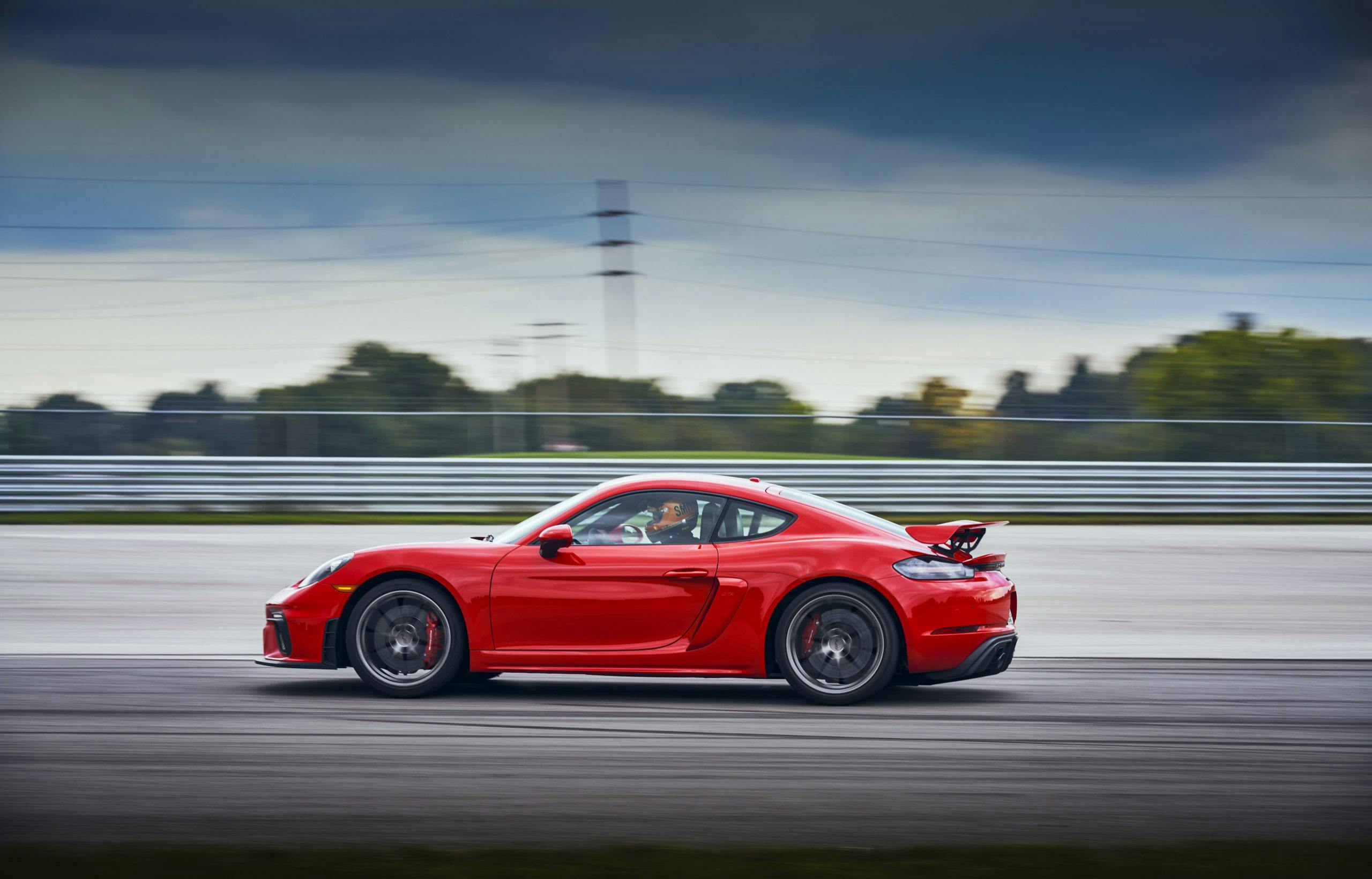

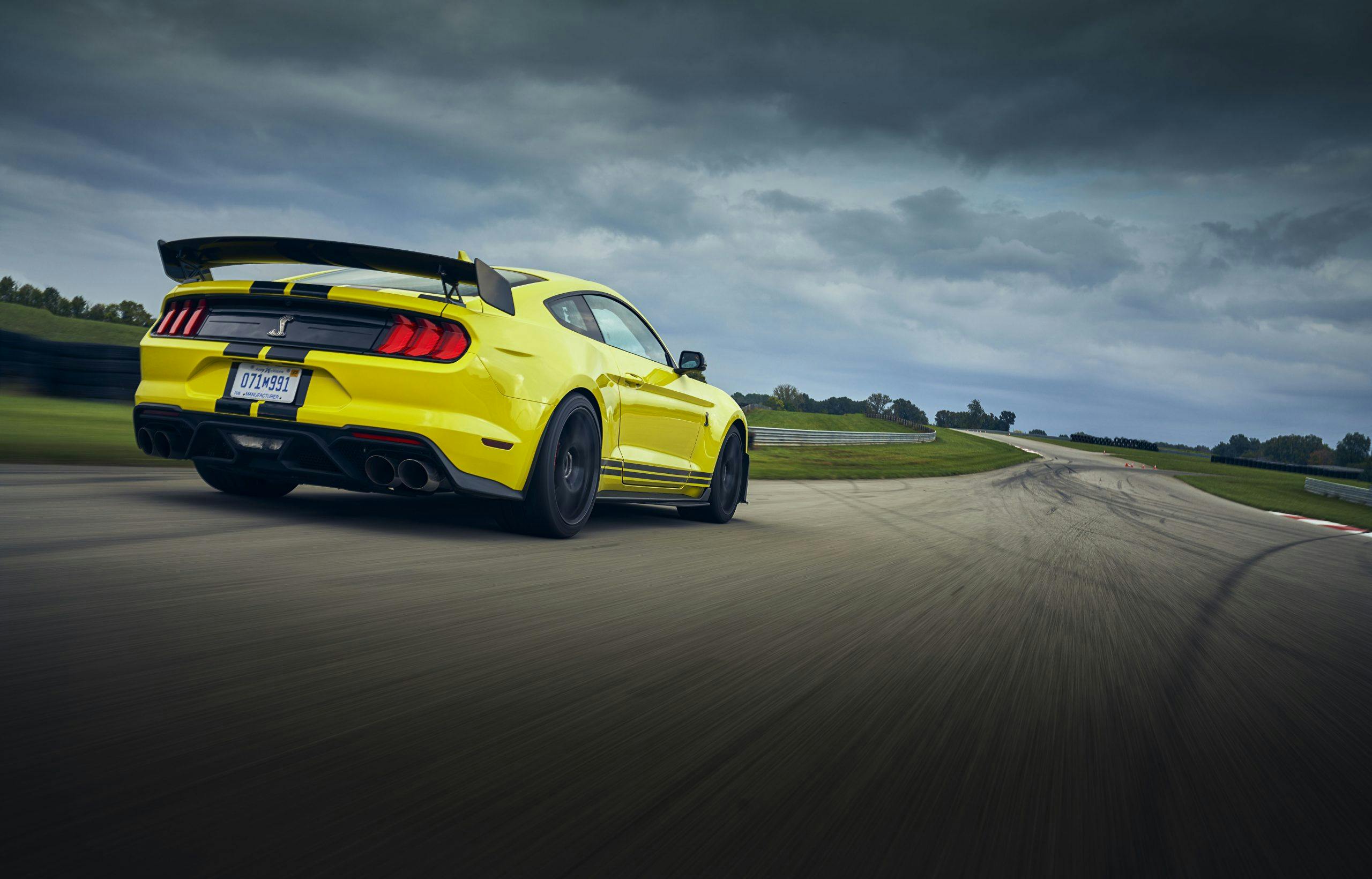

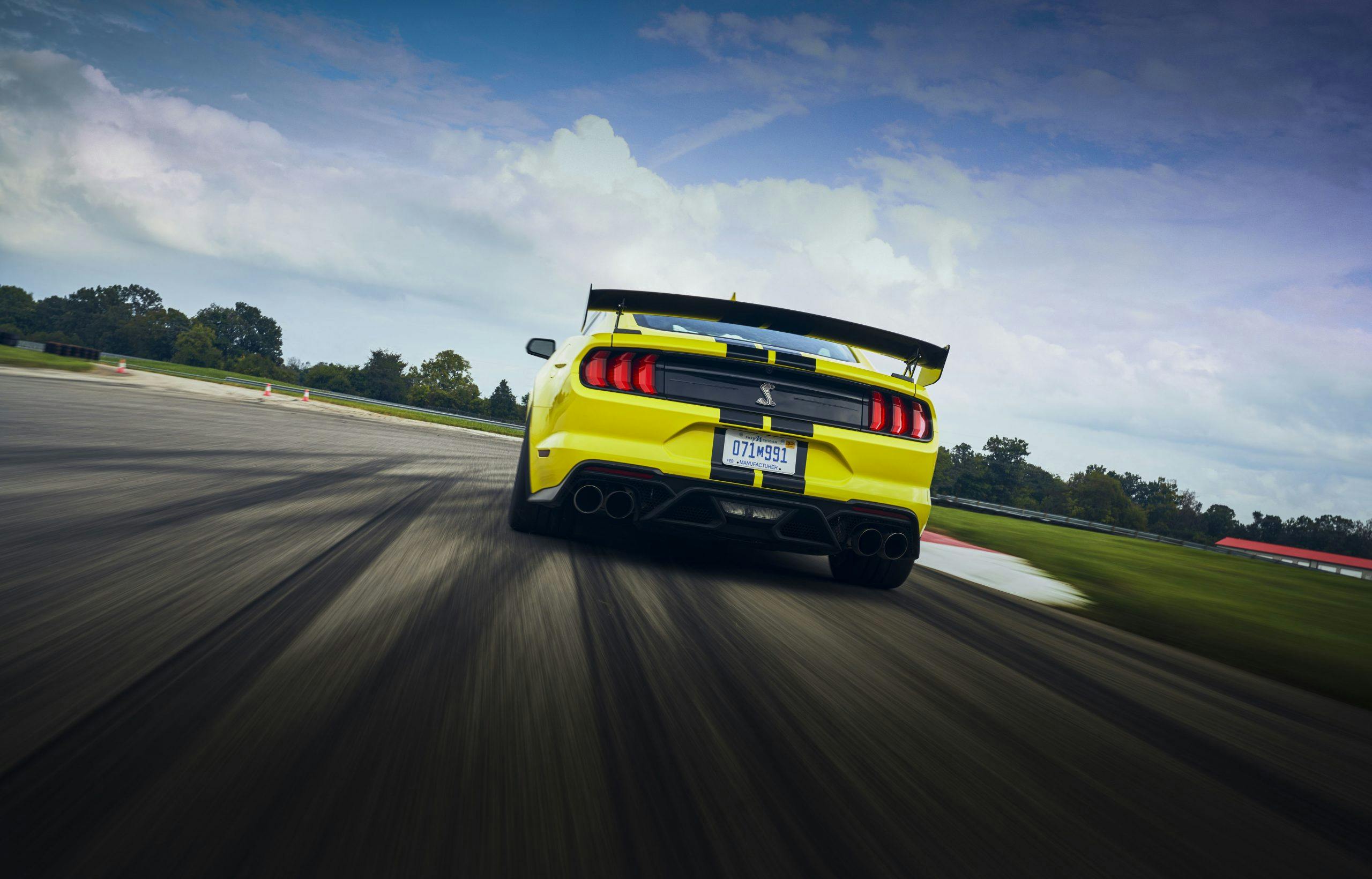


















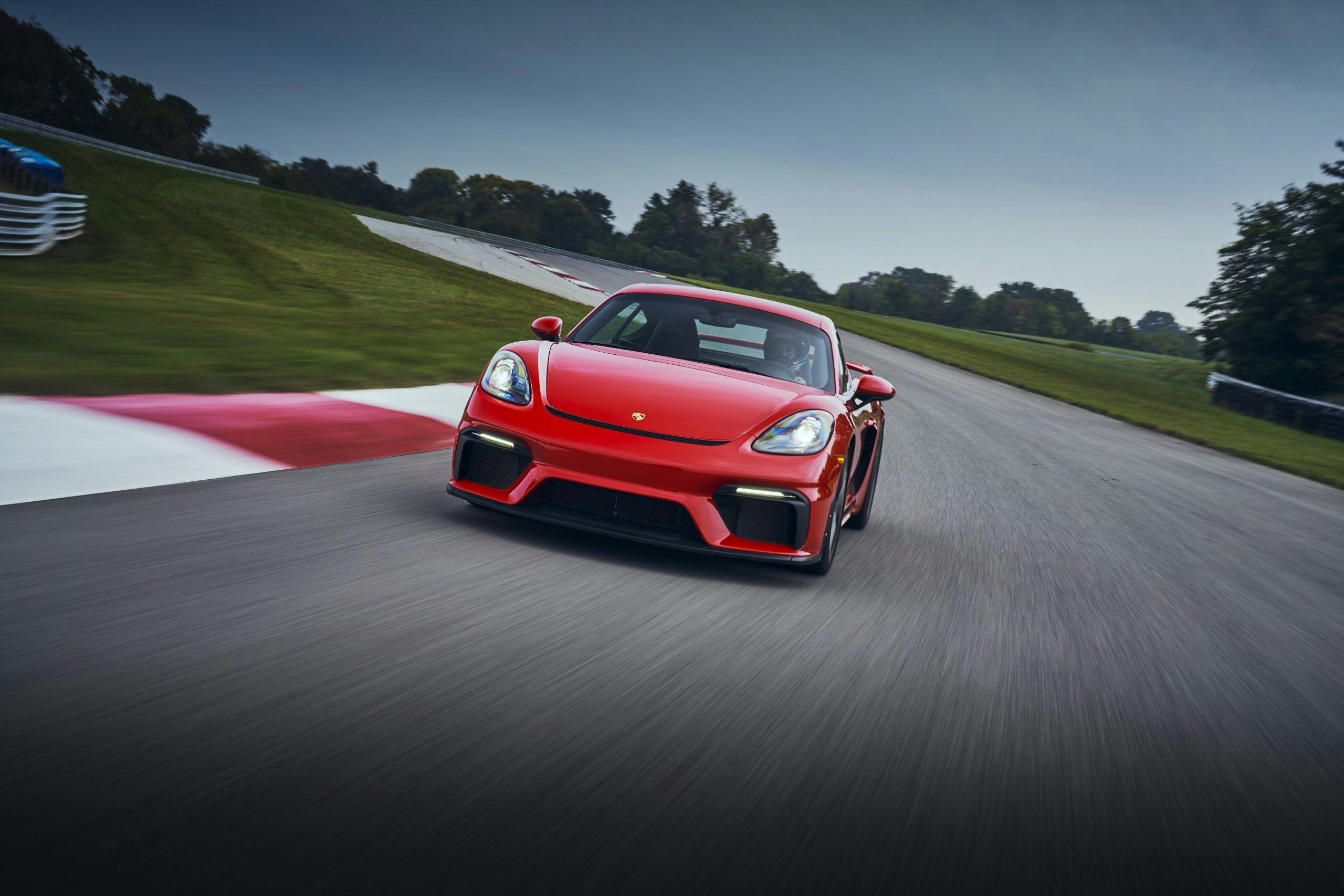








































































































































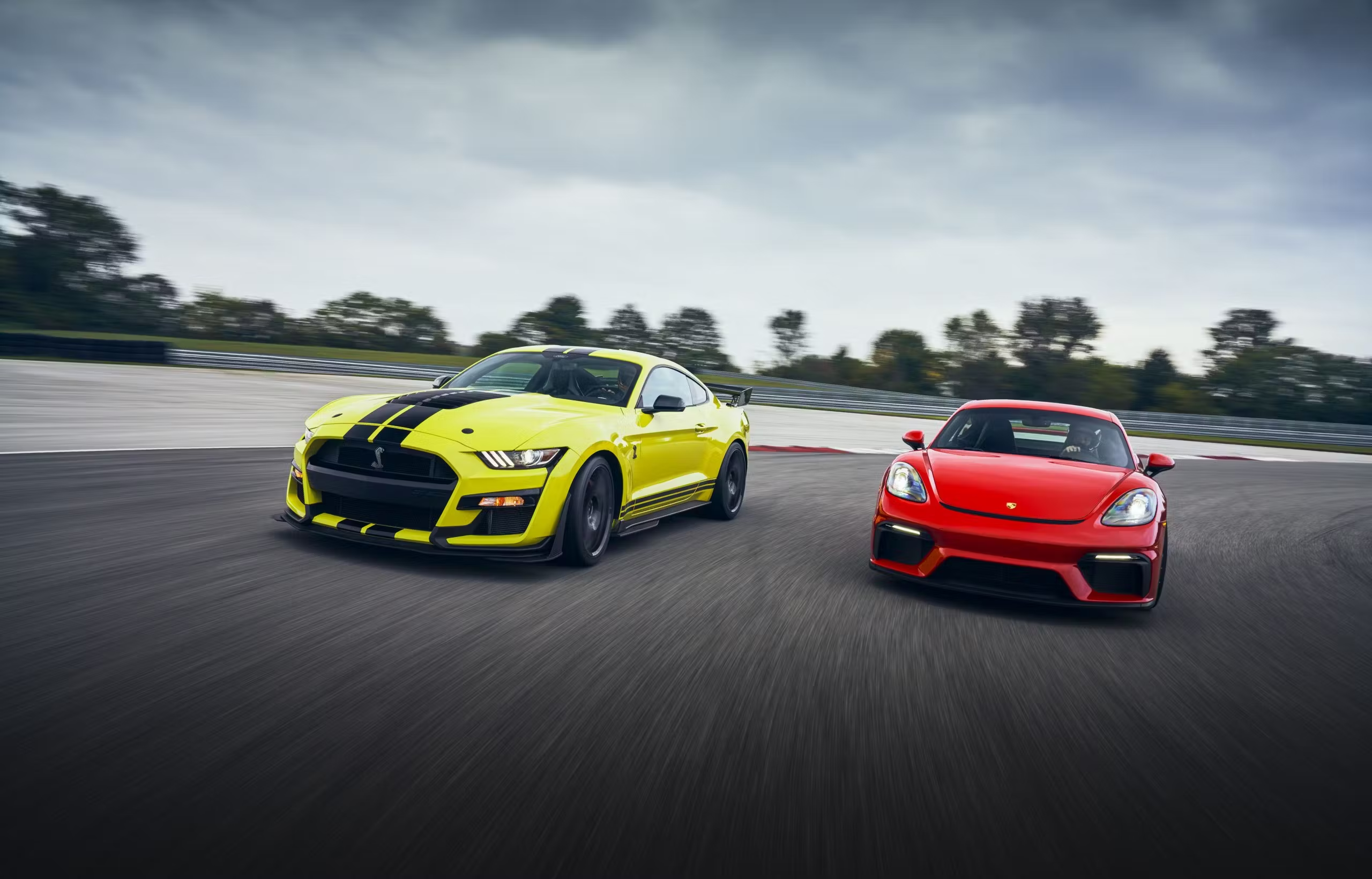
Thanks for the good read, Sam. Love the photos, too. I’m in line for a GTS 4.0 Cayman but my second consideration was a GT350. Keep ’em coming!